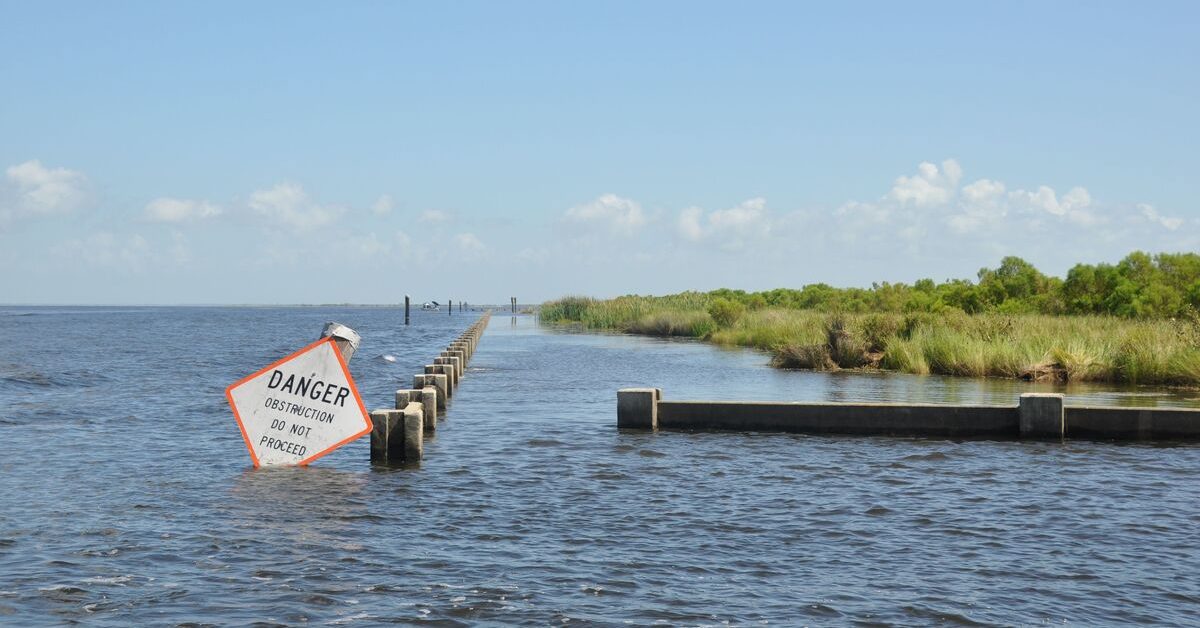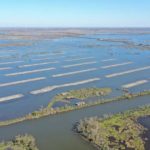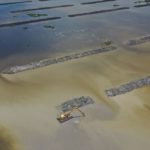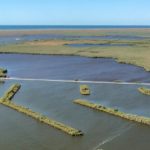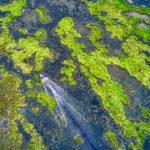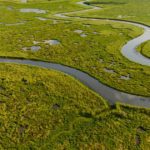Wetlands are a crucial part of our environment that we must strive to protect at all costs. Destroying these regions will negatively impact our environment and disrupt the surrounding ecosystems.
To safeguard our wetlands, we must practice wetland mitigation. Also known as compensatory mitigation, wetland mitigation is the process of creating or restoring wetlands lost to development. The ultimate goal is to replace as much as possible the functions and public benefits of the destroyed wetlands.
Wetland mitigation is a subset of mitigation banking, which is a system of credits and debits designed to ensure that ecological damage—especially to wetlands and streams—is offset by the preservation and restoration of natural habitats, streams, and wetlands. Ultimately, there should be no net loss to the environment.
If you want to know more about wetland mitigation, continue reading this article.
What is the Purpose of Wetland Mitigation?
Wetland mitigation is designed to replace damaged or destroyed wetlands with newly created or restored wetlands. While wetland mitigation provides numerous benefits—including flood control, erosion control, and carbon sequestration—the ultimate goal is to offset the impact of development and restore the functions and public benefits of the lost wetlands.
To achieve these objectives, a wetland mitigation bank needs to be set aside for wetland development or enhancement. A wetland mitigation bank could be a salt marsh, forested wetland, or seasonal wetland.
The person or entity that undertakes the restoration work is known as a mitigation banker. The mitigation banker earns credits that it can then sell to commercial developers who need to offset their mitigation debits.
The amount of mitigation credits required is determined by the size and scope of the development project. Each mitigation bank is a separate entity, and each credit is worth a set price, which is agreed upon by both the buyer and seller.
Wetland mitigation banks are regulated by the United States Army Corps of Engineers (USACE) and the Environmental Protection Agency (EPA).
What Does Wetland Mitigation Do?
Mitigation activities that compensate for wetland loss include the creation of new wetlands and the restoration or enhancement of existing wetlands. The restoration of wetlands is an important element of ecosystem rehabilitation since wetlands are buffers that eliminate pollution before it reaches sensitive ecosystems. By creating more wetlands, we can safeguard the integrity and biodiversity of surrounding ecosystems.
Mitigation banks are generally more successful than individual onsite projects because they combine several projects into a single site. This concept was developed to provide landowners with a superior ecological impact while providing entrepreneurial opportunities.
What are the Three Main Types of Wetland Mitigation?
According to the USACE and EPA, there are three main wetland mitigation strategies: restoration, enhancement, and creation.
Restoration
Wetland restoration involves the rehabilitation of the entire wetland so that it can return to its natural function. This could involve the manipulation of the degraded wetland’s hydrological, physical, biological, and chemical characteristics.
The ultimate goal of wetland restoration is the creation of a self-regulating system. Note that the availability of credits will depend on the size and scope of the wetlands being restored.
Enhancement
Wetland enhancement refers to the improvement or enhancement of specific functions of an existing wetland. This is often accomplished by changing the depth of an open water source or ground elevation on the site.
Various types of enhancement methods are considered in this context. For example, the depth of the ponding could be enhanced to support vegetation and wildlife.
Wetland enhancements are generally more expensive than wetland restorations.
Creation
As the name suggests, wetland creation involves the creation of wetlands in places that have never hosted this type of ecosystem. This is generally the most expensive and difficult of the three wetland mitigation strategies.
Artificially created wetlands need reliable sources of water and a subsurface hydrological regime that can support the wetland’s plants and animals. Before selecting a site for development, a thorough hydrological analysis needs to be made.
Hydrological elements that are vital to maintaining a viable wetland include the inflows and outflows of surface water and groundwater, the resulting water levels, as well as the timing and duration of flooding and soil saturation.
There is also a 4th type of wetland mitigation—preservation. This involves maintaining a present wetland as a wetland by not allowing any development on the property.
The more expensive/difficult restoration projects also receive more credits per acre from the USACE than those that are less intensive.
What is Wetland Reallocation or Replacement?
Wetland reallocation or replacement is a complicated and expensive project which involves converting an entire wetland into another type of wetland. An example of this would be converting seasonally flooded wetlands into wet meadows. Due to its rather drastic nature, wetland reallocations have attracted their fair share of controversy.
The process of compensatory wetland replacement is complex and often involves a process called “wetland banking”. This assumes that the compensatory wetland is equivalent to the wetland lost. And while wetland reallocation and replacement may be necessary to meet environmental, economic, and social goals, it isn’t always feasible.
Wetland replacements have been widely attempted and widely debated, despite their many benefits. However, in many cases, compensatory wetland restoration projects have been unsuccessful.
Ideally, wetland reallocation and replacement should occur in locations that are less susceptible to flooding or adverse impacts. Replaced wetlands may receive large amounts of pollution, such as those downstream of roadways or parking lots.
These replaced wetlands may not be safe habitats for wildlife and may also fail to perform basic ecological functions. In light of these challenges, applicants need to address these issues and come up with viable resolutions before applying for a permit with the US Army Corps of Engineers (USACE).
What Are the Pros and Cons of Wetland Mitigation?
Wetland mitigation offers numerous advantages and disadvantages. Listed here are some of them.
Pros
More Efficient Restoration and Conservation
Wetland mitigation often targets large, consolidated areas for restoration and conservation. This process is a lot more efficient compared to restoring and conserving numerous, far-flung sites. Aside from being more efficient, it is also more cost-effective to restore consolidated sites.
Reduces Storm Damage
In recent years, there has been a growing interest in alternative defense measures for coastal communities that are vulnerable to storm-related flooding. Coastal wetlands are known to lessen the impact of storm surges, which in turn greatly reduces property damage.
According to a research report released by Cornell University, the economic value of protective wetlands is about $1.8 million/km2 per year.
Prevents Flooding
Wetlands are sometimes described as large catchments that can store floodwater from riverbanks. As the floodwaters recede, the water is expelled slowly from the wetland soil. By slowing down the rate of floodwater re-entry into the stream channel, wetlands can reduce the severity of downstream flooding and erosion.
Provides USDA Eligibility for Agricultural Projects
Wetland mitigation is a great way to offset the impact of agricultural projects on wetlands’ function and value. By restoring former wetlands, farmers and ranchers are better able to generate credits, and their USDA funding is no longer tied to the number of wetlands they convert.
Maximizes Developers’ Usable Land
Wetland mitigation is a critical component of many commercial, energy, and transportation projects. It must be ecologically and legally acceptable and achieve no net loss of wetland habitats. Wetland mitigation helps developers maximize the use of land by purchasing credits and conducting development work.
Cons
Loss of Smaller Wetlands
Wetland mitigation is often done to offset the loss of smaller remote wetlands by protecting larger wetlands. While this is beneficial for protecting large ecosystems, small and remote wetlands are often destroyed in the process.
Increased Expenditure
While mitigation banking is a profitable venture, it comes with attendant costs—including the cost of wetland delineations and wetland permitting. This can lead to increased overall expenditure.
Failed Efforts
Sometimes, no matter how hard you try to protect a wetland, there are negative repercussions. There have been many cases where surrounding ecosystems were negatively impacted despite careful planning during the wetland restoration process.
Is Mitigation Banking Successful?
A mitigation bank offers a win-win situation for all involved parties. It lets developers easily conduct development work without having to worry about environmental impacts. It also protects the environment by restoring and conserving wetlands. Apart from that, it helps mitigation bankers earn a good profit.
A mitigation bank is a public or private entity that sets up mitigation sites and a governing board. A mitigation bank must meet certain criteria cited in law, and the sponsor must demonstrate a legal interest in the property to operate the bank.
The basic concept of mitigation banking is to shift liability for ecological losses from the developer to a mitigation banker, who will then manage the site for its long-term development. This approach has many advantages. Regulatory certainty, transparency, and private investment in mitigation banks are all growing in the United States.
In order for mitigation banks to be successful, the site must be protected and the mitigation bank must have appropriate monitoring and assessment measures. Monitoring can be accomplished through a variety of methods, including conservation easements and deed restrictions.
Overall, wetland mitigation banking has been highly successful in the US as major wetlands have been preserved and restored over the last few decades. Due to the increased risks brought about by climate change and the need for environmental protection, the future looks bright for mitigation banking projects.
